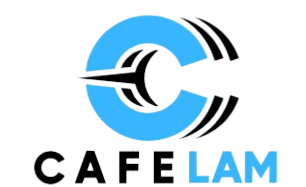Laser hair removal remains a popular choice for long-term hair reduction, with new tech making it safer and effective for various skin and hair types. Despite market changes and mixed results, many wonder if it’s worth it in 2024. This guide covers its effectiveness, cost, comfort, and more to help you decide. While shaving and waxing offer short-term fixes, laser treatments provide lasting results and convenience. How well does it work across skin types? Is it safe and effective? Read on for a detailed look at the pros and cons of laser hair removal today.
Laser Hair Removal
Laser hair removal treatment works by sending concentrated light beams into the hair follicle, damaging it enough to slow hair regrowth. This highly targeted approach means that, unlike waxing or depilatory creams, the root of the hair is addressed, offering a more lasting reduction in unwanted hair. Typically, multiple sessions are needed to capture all hairs during their growth phase, and periodic maintenance sessions may be recommended for long-term effects.
Effectiveness and Results
Clinical research backs the long-term efficacy of professional laser hair removal treatments. For example, a study in the Journal of Cosmetic Dermatology demonstrated that six laser treatments can reduce hair quantity by up to 70% in targeted areas such as the underarms. However, results aren’t uniform for everyone; outcomes depend on factors like hair color, thickness, skin type, and hormonal influences. While most people notice a dramatic decline in hair density, some may require additional touch-ups for optimal conservation of results.
Cost Analysis
The financial commitment for laser hair removal is higher than for shaving or waxing initially, but the overall cost may be lower over the years. Traditional hair removal methods require frequent purchases—think razors, replacement blades, creams, and regular waxing appointments at salons, which all add up. Once the initial treatment cycle is complete, laser hair removal typically only needs occasional touch-ups, eliminating the ongoing expenses and hassle associated with other techniques. The average cost varies by area treated and number of sessions, but many find long-term savings make it a practical investment.
Pain and Discomfort
Pain tolerance varies, but most clients describe the sensation of a laser session as a mild snapping or tingling—comparable to the flick of a rubber band or a faint sunburn. Over the past few years, advances in laser technology have helped minimize discomfort, with new systems employing innovative cooling tips or pulsed energy that make treatments more tolerable. Pre- and post-treatment care instructions, such as using soothing gels or cooling packs, also help minimize side effects, making the process relatively easy for most people.
Safety and Side Effects
Laser hair removal is widely considered safe when performed by trained professionals in reputable clinics. Most common side effects are mild and short-lived, such as redness, swelling, or light irritation that disappears within a few hours to days. Rare but serious complications, such as burns or pigment changes, are more common when unlicensed or inexperienced operators do procedures. Researching and choosing a licensed clinic to substantially minimize these potential risks is crucial, ensuring your results are both beautiful and safe.
At-Home Devices vs. Professional Treatments
Home-based laser and IPL (Intense Pulsed Light) hair removal devices have surged in popularity, offering cost-effective and convenient alternatives to professional office visits. These gadgets can noticeably reduce hair regrowth, but the consensus among dermatology experts is that they generally deliver only 60–75% of the results obtainable from in-office laser procedures. Moreover, improper use or device selection can increase the chances of skin irritation or burns, especially for those with darker skin tones. Users should carefully follow manufacturer instructions and consider professional options for optimal effectiveness and safety.
Suitability for Different Skin and Hair Types
Early generations of laser technology were most effective on people with contrasting skin and hair color (light skin and dark hair). Recent advancements allow many modern devices to safely treat a broader range of skin tones and hair shades. However, outcomes can still be variable for individuals with very light blonde, gray, or red hair, as these hairs contain less pigment for the laser to target. Those with darker skin should ensure clinics use appropriate wavelengths and equipment suited to their melanin levels. Always book a consultation with a qualified professional to establish if you’re a good candidate for laser hair removal and to design a personalized treatment plan.
Conclusion
For those seeking smoother, low-maintenance skin, laser hair removal treatment in 2024 offers an attractive balance of convenience, results, and long-term cost savings. The initial commitment is higher than shaving or waxing, but the rewards are considerable—fewer ingrown hairs, less time spent managing body hair, and long-term aesthetic confidence. Remember, the effectiveness and safety of your results depend on practitioner experience and device quality, so it’s vital to select reputable providers and consult experts on your suitability. By weighing the benefits against your personal needs and preferences, you’ll be ready to decide whether laser hair removal is right for you this year.







